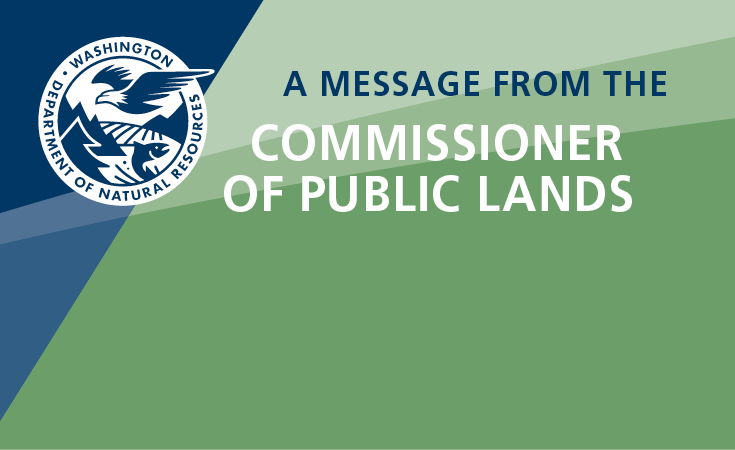Fund Balances - Derelict Vessel Removal Program
- $8.3 million — Watercraft Excise Tax or WET (Source: revenue from state sales tax)
- $2 million — Derelict Vessel Removal Account or DVRA (Source: recreational vessel registration fee; commercial vessel fee)
Balance of Funding for Derelict Vessel Removal
(2023-2025 Biennium) (Updated March 12, 2025)
| Fund Source | Funds Spent to Date | Committed Funds* |
Estimated Funds
Available
|
|---|---|---|---|
|
Watercraft Excise Tax
|
$ 5,597,862.55
|
$ 3,780,326.68
|
$ 278,410.77
|
|
Vessel Registration
|
$ 967,732.41
|
$ 230,355.28
|
$ 252,412.31
|
|
|

Derelict Vessel Inventory & Reimbursement Priorities
- Condition of the vessel
- Condition of its anchoring or mooring system
- Size of the vessel
- Proximity to navigation channels
- Anticipated weather conditions
- General potential for harmful encounters with people or property
- The toxicity or hazard potential of the hazardous substance(s) on board the vessel
- Location of the vessel, particularly its proximity to potentially sensitive areas or populations
- Potential as an attractive nuisance
- Owner’s involvement with vessel, including factors such as proper registration, actions actually taken or not taken, and owner’s ability to take care of the vessel or lack thereof.
Priority 1 Emergencies
-
Vessels that are in danger of sinking, breaking up or blocking navigation channels or that present environmental risks such as leaking fuel or other hazardous substances.
-
Vessels that meet the temporary possession criteria or that will meet those criteria if owner stops taking or fails to take action.
Examples: vessels adrift, sinking, dragging anchor, badly anchored/moored, pumps barely keeping up with water intake, beached and breaking up, sunk in a navigation channel, or presenting environmental risk such as leaking fuel or other hazardous materials.
Priority 2 Non-emergency existing threats to human health, safety and environment
-
Vessels, floating or sunken, which pose an existing or probable future—but not immediate—threat to human health, safety and the environment. These vessels are likely to become Priority 1 vessels after a minor change in circumstances
Examples: vessels sunk near a boat launch; vessels beached near a public access area, vessels abandoned and unattended in an area of high current or vessel traffic, vessels that need to be pumped continuously to stay afloat and are not tied to shore power, vessels sunk where they may be a hazard to small vessel navigation (e.g., sunk just under the surface), and vessels in advanced state of deterioration and/or dismantled-particularly those with fuel on board.
Priority 3 - Vessels impacting habitat and not already covered in prior category
Any vessel, floating or sunken, that doesn't meet one of the previous categories but still poses a direct threat to any of the elements of the natural environment, including vessels that impact:
-
Any plant or wildlife species listed on a state or federal endangered, threatened, proposed, sensitive, candidate, concern or monitor list.
-
Essential habitats where listed species have primary association, such as spawning areas.
-
Any other plant or animal species protected by a local, state or federal agency.
-
Aquaculture practices and/or farming of food fish, shellfish, and other aquatic plants and animals in fresh water, brackish water or saltwater areas.
-
Marine protected areas, restoration areas or aquatic reserves. (A vessel can potentially impact these areas without being located within its boundaries.)
Examples: vessels that are in proximity to shellfish beds or public beaches, sunk or abandoned in or near a marine reserve, aground on surf smelt or sand lance habitat, or creating barriers to fish passage.
Priority 4 Minor navigation or economic impact
-
Vessels, floating or sunken, that don’t meet one of the previous categories but pose an economic impact such as blocking a marina slip, public park buoy or guest dock, or vessels in trespass in a planned buoy field or private mooring buoy.
Priority 5 Other abandoned or derelict vessels
-
Vessels that meet the definition of abandoned or derelict, but do not satisfy any of the criteria listed above. These vessels may be sunk at depth or floating but well-kept and attended vessels in trespass.
Vessel Inventory and Removal Lists
List of vessels that DNR has identified as potentially derelict or abandoned. Vessels are listed in order of priority; however, as explained above, this order doesn’t necessarily correspond with the order of removal.
List of all the vessels that the Derelict Vessel Removal Program has removed since the program began. The Project ID numbers on these lists consist of a two digit county code, the year the vessel was reported, and the order in which the vessel was reported to DNR. For example, PI06-008 would be the eighth vessel reported in Pierce County in 2006.


